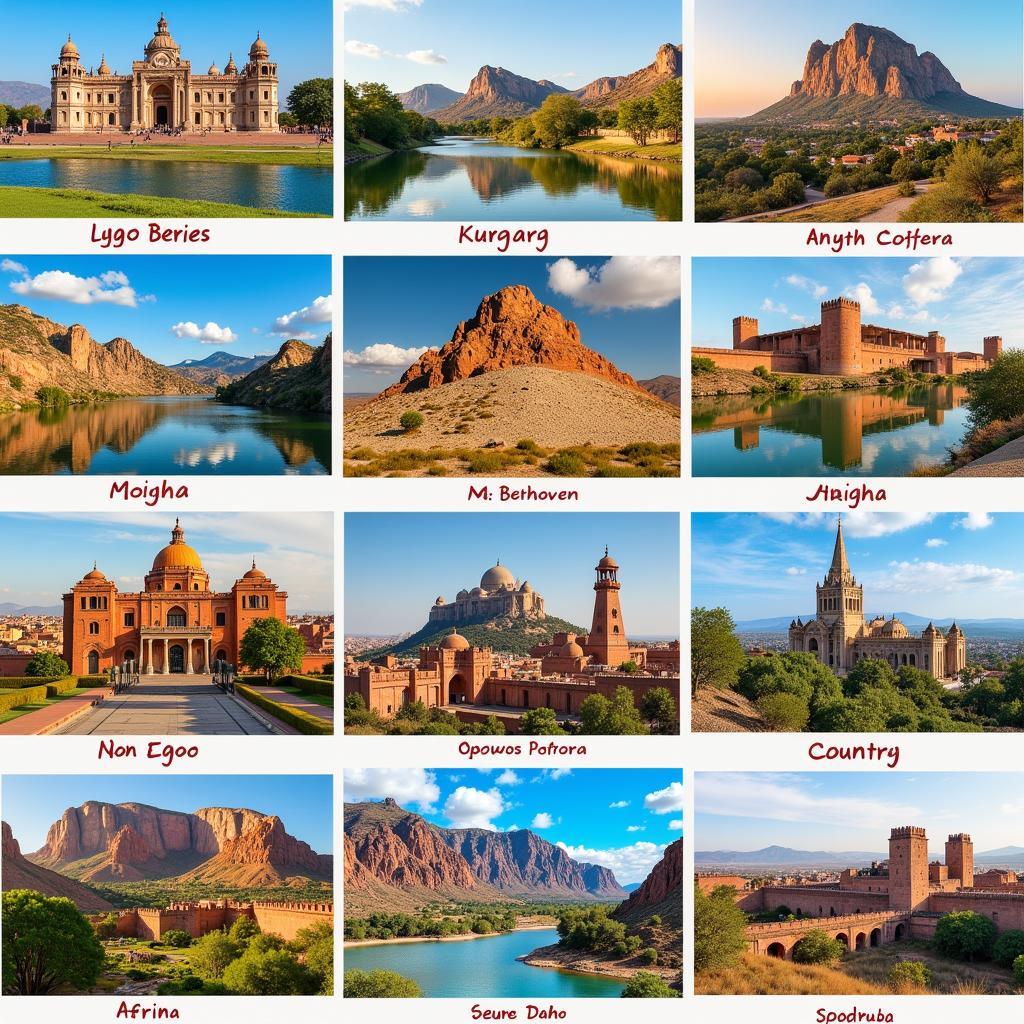Exploring African Grasslands Names
The vast expanse of African grasslands, with their diverse landscapes and teeming wildlife, are known by various names, each reflecting the unique characteristics of the region. Whether you’re picturing the iconic “savanna” or delving into the lesser-known “miombo woodlands,” understanding the different African Grasslands Names offers a glimpse into the continent’s remarkable biodiversity.
 African Savanna Landscape with Zebras
African Savanna Landscape with Zebras
Unraveling the Terminology: What Defines a Grassland?
Before diving into the specific African grasslands names, it’s important to understand what constitutes a grassland ecosystem. Characterized by a dominance of grasses rather than trees, grasslands thrive in regions with moderate rainfall, making them a perfect habitat for a fascinating array of herbivores and the predators that follow.
Savanna: The Epitome of African Grasslands
Perhaps the most recognized among African grasslands names, “savanna” evokes images of wide-open plains, scattered acacia trees, and iconic wildlife like lions, elephants, and giraffes. This name, originating from the Spanish word “sabana,” meaning “treeless plain,” accurately captures the essence of these ecosystems found across the African continent.
Different Types of Savannas: Unveiling the Variations
While the term “savanna” might conjure up a singular image, these grasslands are far from uniform. Variations in rainfall, soil type, and altitude contribute to the emergence of different savanna types, each with its unique characteristics:
-
Serengeti: Located in Tanzania and Kenya, the Serengeti is renowned for its vast plains and the Great Migration, where millions of wildebeest and zebra traverse the landscape in search of fresh grazing grounds.
-
Masai Mara: Forming part of the Serengeti ecosystem in Kenya, the Masai Mara is famous for its high concentration of predators and the dramatic river crossings during the migration.
 Masai Mara Grasslands with Lions
Masai Mara Grasslands with Lions
- Kruger National Park Savanna: Situated in South Africa, Kruger’s savanna is known for its diverse landscapes, from open plains to dense woodlands, supporting a remarkable variety of plant and animal life.
Beyond the Savanna: Exploring Other African Grasslands Names
While the savanna might be the most well-known, numerous other ecosystems fall under the umbrella of African grasslands. These landscapes, each with its unique name and characteristics, contribute to the continent’s extraordinary biodiversity:
-
Miombo Woodlands: Characterized by the dominance of miombo trees, these woodlands, found in southern and central Africa, represent a transitional zone between grasslands and forests.
-
Sahel: Stretching across Africa just south of the Sahara Desert, the Sahel is a semi-arid grassland characterized by drought-resistant vegetation and nomadic pastoralist communities.
-
Sudanese Savanna: Located south of the Sahel, the Sudanese Savanna experiences a more pronounced wet season, resulting in taller grasses and a greater diversity of trees compared to the Sahel.
-
Highveld: Found in South Africa, the Highveld is a high-altitude grassland characterized by cool, dry winters and warm, wet summers. Its rolling hills and vast plains support a rich diversity of plant and animal life.
The Vital Role of African Grasslands: More Than Just a Name
Understanding African grasslands names goes beyond simple nomenclature. It sheds light on the ecological significance of these diverse landscapes. From providing grazing grounds for countless herbivores to supporting intricate food webs, grasslands play a crucial role in maintaining the balance of the African ecosystem. Moreover, they are home to diverse cultures and traditions, with communities relying on these lands for their livelihoods and cultural heritage.


